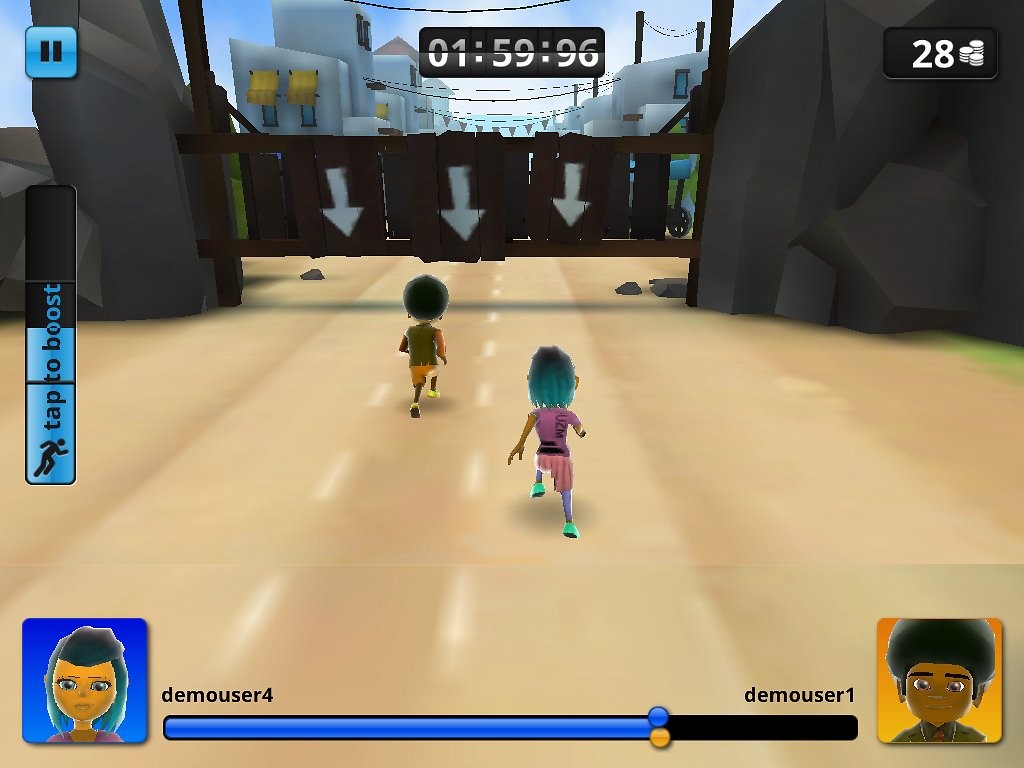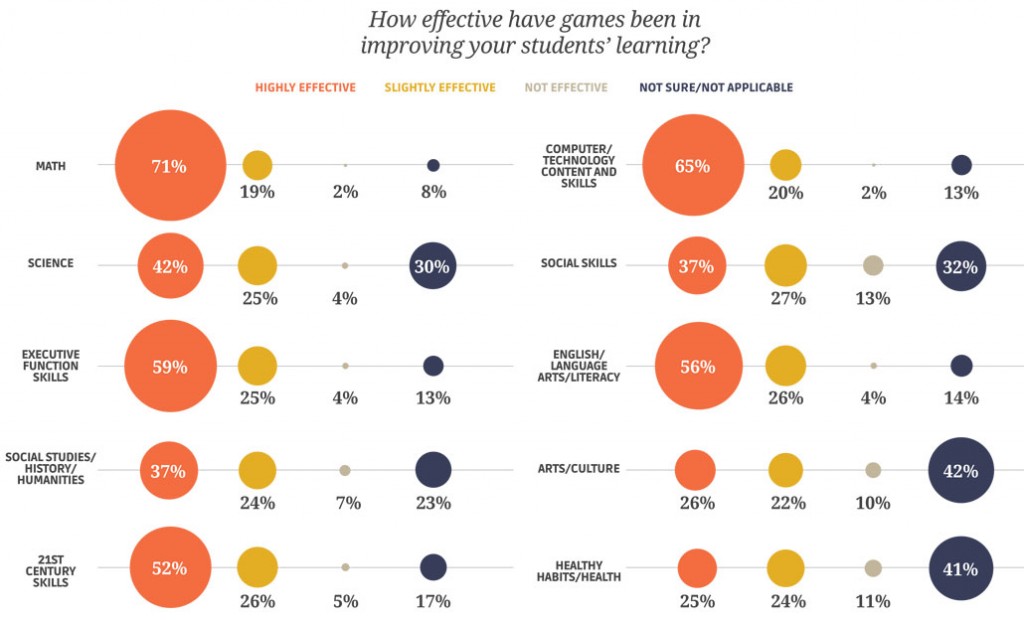Rahul Mahna stood peering up at the peak of Mt. Kilimanjaro and thinking about sixth grade.

Class Compete Uses a math-fueled race game to help kids tackle both math skills and, its supporters hope, test anxiety.
He was afraid. So were several of his fellow climbers, many of them amateurs, who were trying to summon the will to finish the nearly 20,000-foot summit to the top of the highest mountain in Africa.
Some of them had already decided to stay behind at base camp. The altitude sickness, the oppressive cold — it was too much.
As Mahna grappled with his own anxiety about the climb, his mind suddenly snapped back to his childhood. He becomes acutely aware how anxiety has affected other parts of his life, too, particularly in school.
“During tests, my math teacher would say, ‘You’ve got to calm down.’ I felt like I never got the grades I deserved because I got so anxious. It’s something I’ve carried with me my entire career,” Mahna recalled.
Mahna made his way to the top of the mountain, and came down with an idea: an educational game that would help students deal with anxiety — specifically, test anxiety.
The research is complicated and varies depending on the educational environment, circumstance, and the child, but nearly 30 years of academic studies show that roughly a third of grade school students experience moderate to high levels of test anxiety. According to the American Test Anxieties Association, students with test anxiety score 12 points — or half a letter grade — lower than classmates who report low levels of anxiety.
Students often say they experience growing feelings of dread in the 10 minutes or so leading up to the actual test, and overall feelings of powerlessness which can lead to a “why bother” attitude. They give up before they even put pencil to page.
Mahna, founder and CEO of Class Compete, decided to draw upon his love of old-school Atari games and develop a game that would give students a fun opportunity to work on time, pressure and anxiety management skills through a platform that would also spit out assessment tools aligned with Common Core standards for teachers.
The result of that angst, ambition and two years of design is Class Compete, a 3D gaming platform that Mahna says can significantly reduce test anxiety among K-12 students: a bold claim.
“Nobody else is doing this,” said Scott Garrigan, professor of Instructional Technology at Lehigh University’s College of Education. “There really is a demonstrable problem with test anxiety. Nobody seems to be addressing that.”
Garrigan has studied and written about the educational potential of games since the early 1980s. He also led the review team that analyzed the data from Mahna’s pilot program conducted in four different schools — three in New Jersey and one in India — throughout 2014.
“Nothing is proven” explained Garrigan, “but it’s a fascinating connection, and it’s a reasonable one conceptually. It’s clear [students] who went through the game know the math and the game better.”
But claims that the game reduces anxiety? That claim, Garrigan admitted, “is a more conceptual one. This is an early and interesting attempt to bring some of the benefits and time constraints of gaming and address the issue of text anxiety.”
According to Garrigan, kids who connect the internal stress they experience while successfully solving math problems with a customizable, coin-collecting racing character might carry that confidence with them on test day.
Mahna acknowledged the ability to know whether that confidence is carrying into the test is difficult to quantify.
We can’t strap a kid to a device and measure their blood pressure. What we’re reviewing is the effort of time management. We developed some algorithms to measure not just percentage, but how they performed with time as well.
— Rahul Mahna, CEO, Class Compete
The platform boasts over 250 common-core-certified math challenges, with plans to expand to other subjects, like literacy.

Versions for teachers and parents allow them to track student performance and aligns with the Common Core.
Class Compete also includes three companion apps: one for students, teachers and parents. The student app provides access to the game, and both teacher and parent apps are meant to help guide and track a student’s progress within the game.
Mahna used a racing environment during his pilot-program phase. Students controlled their colorful avatar straight ahead through a concrete-paved urban corridor and over wooden obstacles while highrise-buildings blurred past in the periphery.
If a student selects the correct answer to a math problem, the avatar gets a sudden boost of speed, propelling them past their fellow competitors, which are either computer controlled or, Mahna hopes, other students from the same classroom.
Students can use coins unlocked during races to purchase a few in-game custom upgrades, like crazy hair colors, clothing or cool animations, like air guitar moves or the infamous “rock ‘n roll horns.”
“Our lead game designer wanted a really robust store. Kids wanted to make their avatars tougher, with scars and tattoos. Students love competition,” Mahna said.
Joan Sullivan has taught in New Jersey’s School of Saint Elizabeth for 11 years and facilitated Class Compete’s pilot program among her 4th-grade class.
I was nervous about [using Class Compete] in class, because once kids start playing a game they don’t want to stop. You don’t want them to go home and say to their parents, ‘We played video games all day.’ That could be a train-wreck.
— Joan Sullivan, teacher at School of Saint Elizabeth
But Sullivan was intrigued by Mahna’s pitch that his game could help students with math. She didn’t really have much in the way of digital tools in the classroom, and she liked the idea of her students being involved in Mahna’s “personal dream.”
Still, there were logistical challenges — finding enough iPads for all of her students as well as watching the clock to make sure none of them played too long — coupled with the fact none of Sullivan’s 15 students really struggled with test anxiety.
“It’s really unfortunate for children,” Sullivan said. “I’ve certainly heard horror stories where kids are balling their eyes out and losing it when they have to take a test. But I haven’t seen that in my class.”
But overall, Sullivan says it’s been an overwhelmingly positive experience for her class. “I couldn’t have been more thrilled,” she said.
Sullivan said one of her students recently told her how she felt Class Complete improved her ability to understand math questions.
She has the ability to read a problem more accurately when she’s in a timed scenario. She became a better reader when she was forced to read quickly.
Of course, a teacher needs more than anecdotes.
For Sullivan, the ability to pull quantified information directly from the platform is a huge asset, both in convenience and tangible evidence of a student’s progress in a specific mathematical concept over time.
“As an educator, that’s what we really lack,” explains Sullivan. “You can’t put a number on everything that we do. You can’t always just say, ‘Jonny needs help reading. Look at these numbers.’ Once a year, during test time, is often the only time you get numbers.”
Even though she’s not necessarily a gamer, Sullivan’s enthusiasm for Mahna’s baby isn’t surprising. About 71 percent of teachers feel digital games are highly effective in helping their students learn math, according to a recent national survey by the Joan Ganz Cooney Center.
Mahna and his team developed the racing environment, and planned future expansions with the Unity engine. “Unity is an amazing platform. It gives us tremendous flexibility, and the ability to create captivating environments, and allows us to offer our product on multiple platforms,” Mahna said.
This means Class Compete is currently available on iOS (though not on phones), Android, Kindle Fire, and any computer browser, but not Google Chromebooks. Near the end of 2013, Unity dropped Chromebook support rather suddenly, creating an integration issue Mahna and his crew are currently trying to solve.
As 2014 came to a close, Google Chromebooks made up nearly 40 percent of the K-12 device market, compared to 26 percent for iPads.
“I wanted to try and find a creative way to build Class Complete. I’m self-funded, and I haven’t taken any outside investment,” Mahna said, who estimates his personal investment in the gaming platform at “somewhere in the triple digits.”
During the development stage of Class Compete, Mahna said he spent a lot of time with kids, hoping to glean as much as possible from their direct feedback. He went through eight prototypes before settling on the current version. “I originally hired a lot of consultants, but the real experts are the kids,” Mahna said, who also employs a team of eight designers, marketers and web developers.
Looking to young students as models and inspiration for game design is a sentiment shared by others in the education games industry, too. During last month’s Games for Learning Summit at New York University, Ken Weber, executive director for Zynga.com — a non-profit social games organization with over 300 million monthly active suers — said that kids with experience using a gaming concept, like coding for example, give excellent feedback. The kids become the “makers.”
Even though there’s still a lot of work to be done in order to further connect the dots between gaming and test anxiety, Lehigh University’s Garrigan believes Mahna’s on the right track.
“We seem to be barreling down the path of high-stress testing environments. Too bad if you’re a kid.”
